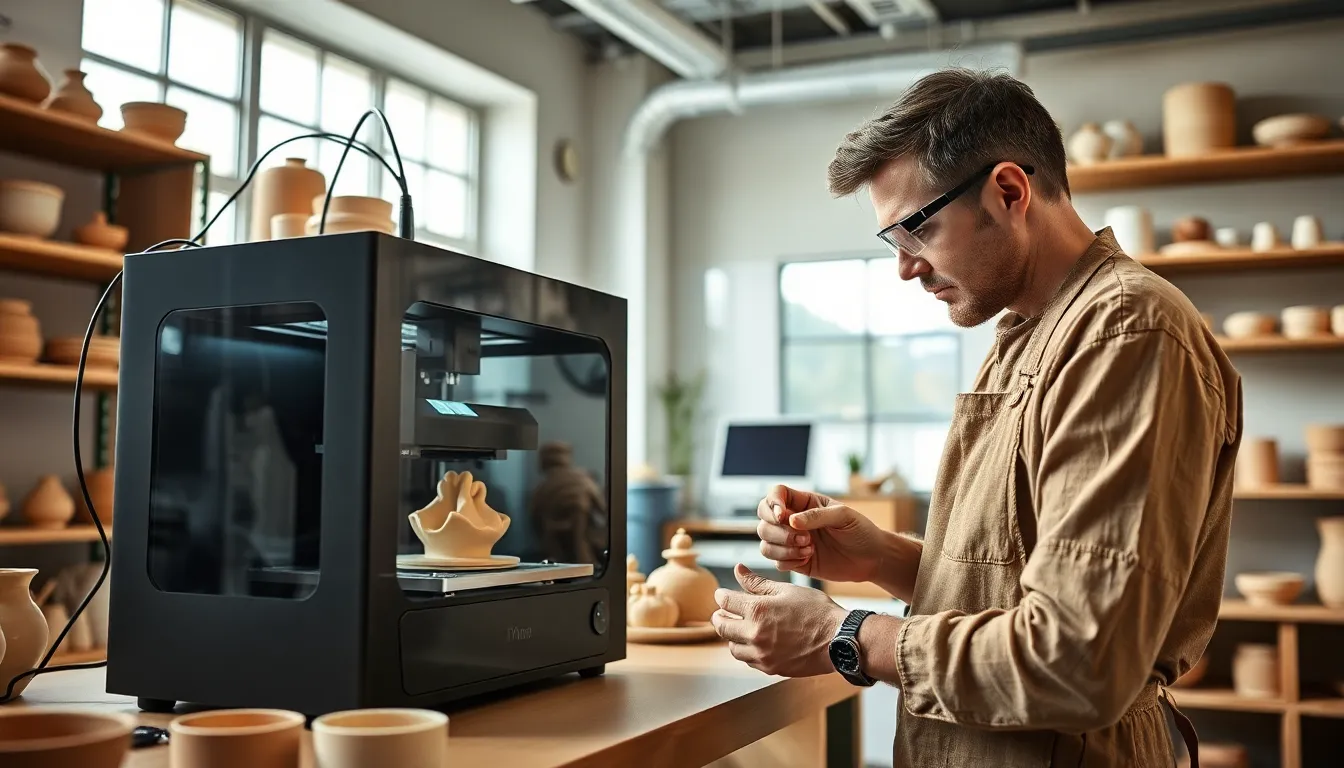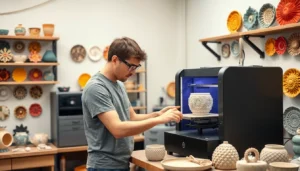Table of Contents
ToggleImagine a world where your wildest pottery dreams come to life, and it’s not just a whimsical thought. Enter 3D ceramic printing, the magic wand of modern manufacturing. This technology isn’t just for tech enthusiasts; it’s for anyone who’s ever wanted to create that perfect mug or avant-garde sculpture without the risk of turning their kitchen into a clay disaster zone.
With 3D ceramic printing, creativity meets precision in a way that traditional methods can only dream of. It allows artists and designers to push boundaries, crafting intricate designs that would make even the most seasoned potter raise an eyebrow. So whether you’re a hobbyist or a professional, get ready to dive into the fascinating world of 3D ceramic printing, where your imagination is the only limit.
Overview of 3D Ceramic Printing
3D ceramic printing represents a significant advancement in the field of additive manufacturing. This innovative technique enables users to create complex ceramic objects with high precision and less waste compared to traditional pottery methods. Artists and manufacturers benefit from the ability to produce intricate designs rapidly, pushing the boundaries of creativity.
The process employs advanced 3D printing technologies, such as selective laser sintering or binder jetting, which allow for detailed layering of materials. Various ceramic materials can be utilized, including porcelain, stoneware, and earthenware, leading to a range of textures and finishes. Each material contributes unique properties, catering to diverse applications from art to functional objects.
Ceramic 3D printing offers significant advantages in terms of customization. Individuals can easily modify existing designs or create unique pieces tailored to specific needs. This flexibility appeals to both hobbyists and professionals who seek to explore new artistic directions or enhance product functionality.
Furthermore, the technology simplifies prototyping, reducing the time from concept to final product. Companies can iterate designs more efficiently and test functionality without the resource-intensive process of traditional ceramic fabrication. This acceleration supports innovation within industries, especially in fields like architecture and industrial design.
Sustainability is another critical aspect of 3D ceramic printing. It minimizes material waste and energy consumption associated with conventional pottery production. By embracing this technology, users contribute to a more sustainable manufacturing approach while maintaining high-quality standards.
Advantages of 3D Ceramic Printing

3D ceramic printing offers numerous advantages, making it a compelling option for artists and manufacturers alike.
Customization and Design Flexibility
Customization stands out as a key benefit of 3D ceramic printing. Users can easily modify existing designs or create entirely new pieces to meet specific needs. This technology enables intricate patterns and unique shapes that traditional methods often can’t achieve. Designers enjoy the freedom to experiment, leading to innovative creations. Hobbyists appreciate the ability to personalize their projects, ensuring each piece reflects their individual style. Enhanced design flexibility encourages creativity, allowing both casual and professional potters to explore new artistic directions.
Cost-Effectiveness
Cost-effectiveness also plays a significant role in the appeal of 3D ceramic printing. Traditional pottery techniques can involve high material waste and labor costs. With additive manufacturing, designers use only the required materials, reducing expenses. The streamlined process shortens production timelines, leading to efficient use of resources. Prototyping becomes quicker and cheaper, enabling rapid iteration of designs without significant financial commitments. This approach supports sustainable practices, making it an attractive choice for businesses aiming to balance quality and budget.
Applications of 3D Ceramic Printing
3D ceramic printing offers a versatile range of applications across various industries, enhancing both functionality and creativity.
Medical Industry
In the medical industry, 3D ceramic printing produces custom implants and prosthetics tailored to individual patients. This technology creates biocompatible ceramic components, improving patient outcomes and comfort. Surgeons benefit from precise models for pre-operative planning, which enhances surgical accuracy. Additionally, dental applications include creating custom crowns and braces that fit perfectly. Significant advancements in 3D printing techniques streamline the manufacturing of these items, reducing costs and lead times, thus revolutionizing patient care.
Art and Design
Artists and designers embrace 3D ceramic printing to manifest complex sculptures and intricate designs that traditional methods cannot achieve. This technology allows for the exploration of new artistic expressions and unique patterns, captivating audiences with originality. Designers can rapidly prototype their ideas, adjusting details on the fly. Personalized items gain traction in the art world, offering consumers bespoke pieces that reflect individual style. The ability to reproduce artwork with precision encourages collaboration between artists and manufacturers, leading to innovative projects.
Aerospace and Automotive
In the aerospace and automotive sectors, 3D ceramic printing aids in producing lightweight components that enhance performance. Aerospace engineers turn to this technology for creating high-temperature-resistant parts that endure extreme conditions. Furthermore, automotive manufacturers utilize 3D printed ceramics for prototypes and production components, facilitating rapid design iterations. Material efficiency remains a priority, as ceramic printing minimizes waste and contributes to sustainable practices. These advancements drive innovation, making products stronger while reducing overall weight, which enhances fuel efficiency and overall functionality.
Challenges in 3D Ceramic Printing
3D ceramic printing presents a variety of challenges that practitioners must navigate to optimize their results. Understanding these challenges can lead to improved practices and outputs.
Material Limitations
Materials used in 3D ceramic printing often present significant challenges. Many traditional ceramics, such as porcelain and stoneware, may not behave optimally with current printing techniques. Variations in material composition can lead to inconsistencies in strength and durability. Notably, some materials may require specific treatments or additives to enhance printability. When working with multiple materials, users may face compatibility issues, affecting the final product’s structural integrity. Additionally, sourcing specialized ceramic powders can prove difficult, limiting design options for artists and manufacturers.
Technology and Equipment Requirements
Advanced technology forms the backbone of 3D ceramic printing, yet accessing proper equipment poses challenges. High-resolution printers often require substantial investments, making them less accessible to hobbyists. Equipment maintenance also demands a certain level of technical expertise, which can overwhelm newcomers. Users must also stay informed about the latest developments in printing technology and software, adding to the complexity. When selecting equipment, compatibility with various material types should be carefully considered, as not all printers support every ceramic material. Overall, navigating these technology requirements can be daunting for individuals and businesses alike.
Future Trends in 3D Ceramic Printing
Emerging trends indicate that 3D ceramic printing will see advancements in material development. Researchers are working on creating stronger and more versatile ceramic composites. Enhanced materials could allow for greater design freedom while improving durability and performance.
Integration of artificial intelligence into the design process is another promising trend. AI can assist designers in optimizing shapes for both aesthetics and functionality. This technology enables more sophisticated designs that were previously difficult to achieve.
Sustainability efforts are expected to expand within the industry. Manufacturers are focusing on eco-friendly materials and methods that minimize waste. This progress aligns with global initiatives aimed at reducing the environmental footprint of production processes.
Collaboration across different sectors is anticipated as well. Partnerships between tech companies and ceramic artists can foster innovation, benefiting multiple industries. By combining creative insights with technical expertise, new applications will emerge.
In addition, personalization trends are set to grow. The demand for custom, unique pieces has increased, pushing manufacturers to adopt more flexible printing processes. Such adaptability enhances the user experience, making it easier for individuals to bring their distinctive visions to life.
Automation also shows promise for streamlining production. Automated systems can reduce labor costs and increase efficiency. This shift opens opportunities for mass customization, allowing businesses to cater to diverse customer needs without sacrificing quality.
Finally, expansion into new markets could significantly impact the future of 3D ceramic printing. Industries such as fashion and interior design are exploring the creative possibilities that this technology offers. As awareness and adoption rise, the potential for innovation in these fields will continue to grow.
3D ceramic printing stands at the forefront of innovation in pottery and manufacturing. Its ability to merge creativity with precision opens doors for artists and professionals alike. The technology not only enhances design flexibility but also promotes sustainability through reduced waste and energy consumption.
As advancements in materials and techniques continue to emerge, the potential applications of 3D ceramic printing will only expand. From medical devices to artistic creations, the impact on various industries is profound. Embracing this technology means engaging with the future of design and production, where unique and functional pieces can be realized with ease.






